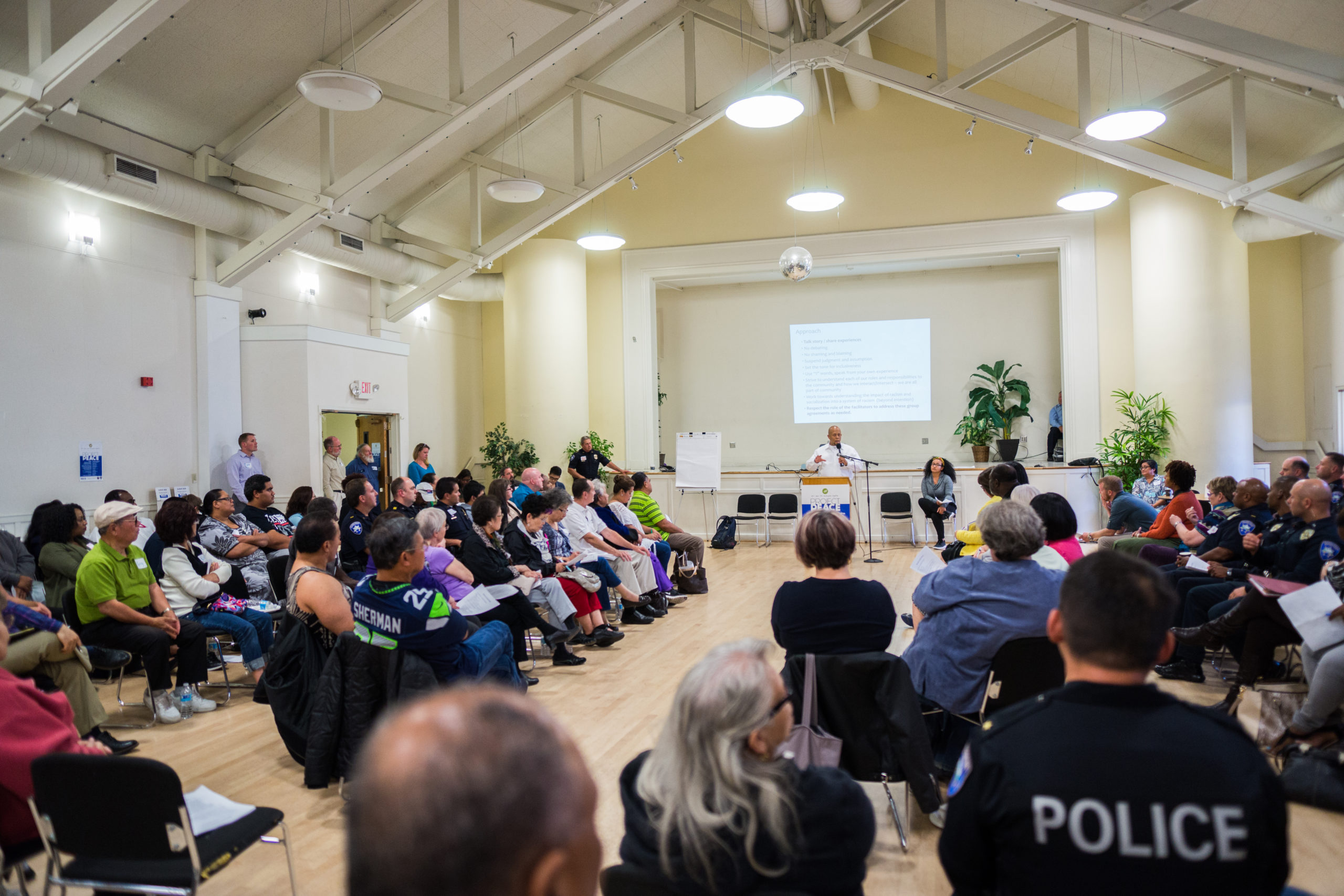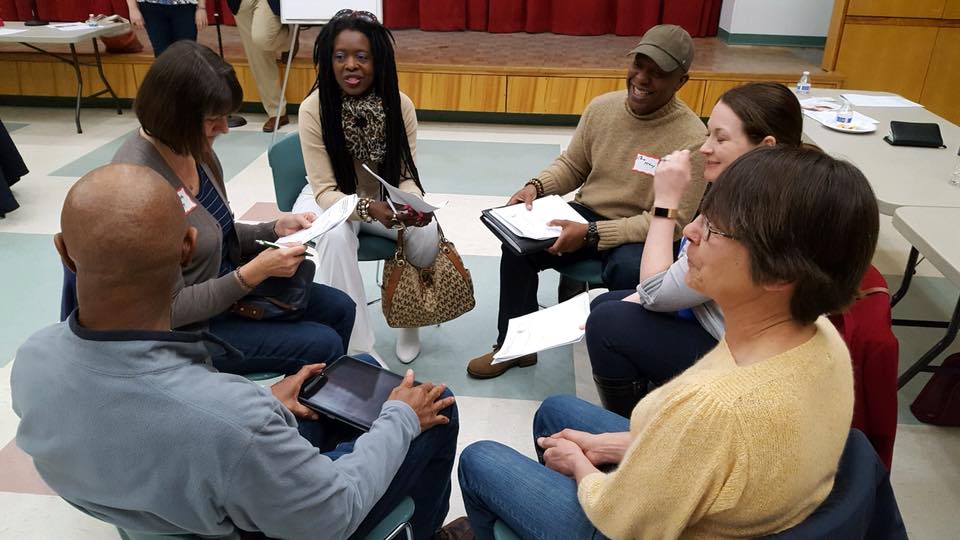By Lindsay M. Miller
The time period from the 1880s to the 1920s was a pivotal era in the United States. Now known as the Progressive Era, this period saw major political, social, and economic transformation. Rapid economic growth powered by industrialization brought unprecedented levels of prosperity, and with it, economic inequality. As the country quickly transformed from agrarian to urban, millions of immigrants poured into cities. While they were looking for jobs and better futures, many of them instead found poverty wages, racism, and segregated ghettos.
Thankfully, in response to the triad of urbanization, immigration, and inequality, progressive leaders surfaced in cities throughout the U.S. to tackle these issues. Some of these leaders are responsible for developing pragmatism—a uniquely American branch of philosophical and political thought. It informed both intellectual discourse and direct action during the Progressive Era, and two of its most influential leaders were public intellectuals and activists John Dewey and Jane Addams. According to O.C. McSwite, pragmatism “formed the core of the intellectual ethos of the early twentieth-century in America.”1
Pragmatism’s emergence took place within quickly-growing urban centers plagued by vast socioeconomic inequality. As cities continue to this day to be tasked with addressing some of the country’s most pressing problems, it is important that they have the tools to do so effectively. Thus, this essay will cover four tools that pragmatism can offer local policymakers: pragmatist epistemology, participatory inquiry, critical optimism, and an embrace of fallibilism. Ultimately, I argue that pragmatism once again ought to inform progressive governance—just as it did at the beginning of the twentieth century.
Pragmatism’s Epistemology
Local policymakers and practitioners generally approach problems with a certain epistemology, or theory of knowledge that guides how they define, interpret, and investigate problems. A consideration of epistemologies is not reserved for philosophers; our epistemologies as local leaders determine every step we take when approaching a problem, whether that problem be economic, social, or political in nature.
Pragmatism offers local policymakers a guide for approaching complex problems, such as poverty, economic development, healthcare, homelessness, aging, and others. It is especially useful for problems with no single source or solution, often called “wicked problems.” Philosopher Danielle Lake defines wicked problems as those “characterized by intense disagreement between fragmented stakeholders, multiple and often conflicting objectives, as well as high levels of uncertainty, variability, and risk.”2
Dewey’s method for solving problems starts with a “problematic situation” that is situated within a broader community.3 Problematic situations can be small—such as the decision of whether or not to hire a new employee. They can also be widespread and complicated, such as addressing poverty among older adults. The key component of a problematic situation is that it induces a feeling of doubt—a recognition that what has worked in the past is no longer working. Finally, a problematic situation is problem-centered rather than discipline, profession, or ideologically-centered. That means that a problem is always situated within its own unique historical context and approached with all the tools at policymakers’ disposal.
Once policymakers have identified a problematic situation, they initiate a process of inquiry that links the problematic situation to a desired end. This end-in-view is a “flexible, practical goal with meaning in the real world that cannot be separated from…human experience.”4 Because a problematic situation is always situated within a larger community, and solutions must always be connected to practical consequences experienced by members of that community, inquiry into a problem is necessarily social and participatory.
 A group of Latino activists used participatory inquiry to hold a series of Latino Town Halls in Tacoma, Washington. The town halls resulted in a commission that works with the city to name and frame the challenges facing the immigrant and refugee communities.
A group of Latino activists used participatory inquiry to hold a series of Latino Town Halls in Tacoma, Washington. The town halls resulted in a commission that works with the city to name and frame the challenges facing the immigrant and refugee communities.
Participatory Inquiry
Once a problem is identified, the pragmatist conducts participatory inquiry to begin addressing that problem. First, the pragmatist invites diverse groups and a “plurality of outlooks” to begin discussing and identifying the problem. For example, if the problem identified is safe and accessible transportation, the pragmatist city leader will invite community members with cars, those who take the bus, those who walk, and those with physical disabilities (among others) to discuss the problem. This method differs from local policymakers who simply seek feedback via surveys or questionnaires. Participatory inquiry means that the community participates in identifying and defining the problem, not just offering opinions regarding possible solutions.
Another important aspect of participatory inquiry is the role of the expert. Although pragmatism states that complex problems cannot be solved solely by experts—be they policymakers, administrators, non-profit leaders, or other professionals—they still have a critical role to play. Indeed, Dewey asserts that their “expertness is not shown in framing and executing policies, but in discovering and making known the facts upon which the former depend.”5
One of the ways experts uncover the facts at the core of a problematic situation is by listening. Dewey and Addams both stress that listening is a critical component of participation and that the primary listener is what Camilla Stivers calls the “listening bureaucrat.”6 The listening bureaucrat practices empathy and avoids partisanship and prejudice when listening to the experiences of community-members. She collects the experiences of community members as a scientist would collect empirical observations of an experiment—treating them as facts.
Further, experts can fill a facilitator/mediator role in participatory inquiry. The facilitator/mediator is an important leadership role in participatory inquiry and requires that leaders be receptive, adaptable, and open to new and diverse viewpoints. According to pragmatism scholar Patricia M. Shields, “Leader-facilitators in a community of inquiry use reflection and listening to bridge problematic communication dualisms and articulate the larger often-evolving end-in-view.”7 In other words, facilitators synthesize diverse and differing viewpoints. They also monitor and articulate the community’s goal that is constantly developing in response to new information.
In nineteenth and early-twentieth century Chicago, Jane Addams filled the role of leader-mediator in her work at Hull-House. Hull-House was a living laboratory for participatory inquiry in addressing the many problematic situations faced by the working-class immigrants. As most of the workers at Hull-House, including Addams herself, were white, wealthy women, collaborative problem-solving required a constant bridging of different languages, attitudes, experiences, and values.
Critical Optimism
The third element of pragmatism that is useful to local policymakers is its critically-optimistic attitude. Critical optimism differs from both blind optimism and self-defeating pessimism. According to Dewey, “Optimism, untempered by criticism, declares that good is already realized and as a result glosses over the evils that concretely exist.”8 Or, even if it accepts that there is a problem, pure optimism runs the risk of assuming that a solution will come without the work necessary to produce one.
Pessimism, on the other hand, isn’t much better. According to Dewey, “[P]essimism is a paralyzing doctrine. In declaring that the world is evil wholesale, it makes futile all efforts to discover the remedial causes of specific evils and thereby destroys at the root every attempt to make the world happier and better.”9 Pessimism is self-defeating and halts progress. In their own ways, both optimism and pessimism can shut down inquiry.
Critical optimism, or meliorism, avoids the pitfalls of both optimism and pessimism. This attitude accepts wholeheartedly the realities of a situation, even the negative ones. It maintains a faith in humanity and the capacity for action to lead to beneficial outcomes. According to Patricia M. Shields, critical optimism is the “faith or sense that if we put our heads together and act using a scientific attitude to approach a problematic situation, the identified problem has the potential to be solved.”10
In urban centers plagued with seemingly endless problems, a critically optimistic attitude is imperative. It both accepts problematic situations and captures the hope necessary to solve them.

The Battle Creek Coalition for Truth, Racial Healing, and Transformation embodies critical optimism by maintaining that intentional dialogue can broaden perspectives, build trust, and promote racial equity.
Fallibilism
The final aspect of pragmatism that is beneficial to local policymakers is its embrace of fallibilism. Fallibilism, originally attributed to Charles S. Peirce, says that it is impossible to acquire the one, unchanging truth about a situation because it is impossible to attain a God’s eye view of reality.11 Thus, all knowledge—and all solutions—are provisional.
Embracing fallibilism isn’t just about accepting logical premises or epistemological positions. From a local government perspective, it is about embracing and accepting the everyday realities of governance. Shields writes, “Public programs seldom solve problems; rather, programs address collective needs that are always greater than available resources—year after year, decade after decade.”12 Problems constantly evolve and, at least in the current climate, solutions will rarely be permanent.
Another benefit of fallibilism is that, even if there are adequate resources to address a problem, a solution to one problem often creates new problems. Aaron Wildavsky portrays this phenomenon eloquently:
The reforms of the past lay like benign booby traps, which could make one stumble even if they did not explode…More and more public policy is about coping with consequences of past policies…the more we do, therefore, the more there is for us to do, as each program bumps into others and sets off consequences all down the line. In this way, past solutions…turn into future problems…Instead of thinking of permanent solutions we should think of permanent problems in the sense that one problem always succeeds and replaces another.13
One contemporary example of a solution that spurs new problems is local economic development and its relationship to gentrification. Economic development in the form of public and private investment can help solve the problems caused by underinvestment and decline. However, neighborhood improvements can sometimes lead to increased property values and the displacement of low-income residents. Instead of viewing this phenomenon as a failure of public policy and a reason to halt investment, pragmatist policymakers view it as a natural outcome of successful policy. They accept that once one problem is solved, another takes its place. Therefore, they focus on mitigating the negative effects of successive problems rather than avoiding action altogether.
Conclusion
The Progressive Era shares many similarities to the present. Today, the world has experienced an economic overhaul as a result of technology and globalization. Cities are experiencing a reawakening as middle- and upper-class people return to urban centers. Immigration is accompanied by racism and xenophobia. And political tensions are high, with polarization fostering distrust amongst individuals, their leaders, and each other.
In response to these challenges, local governments can be inspired by the ideas of the leaders that came before us. Just as the pragmatists guided cities through the early twentieth century in achieving social, political, and economic progress, so too can they assist cities today.
Lindsay M. Miller is a National Civic League Senior Fellow.
1 Quoted in Patricia M. Shields, “Rediscovering the Taproot: Is Classical Pragmatism the Route to Renew Public Administration?” Public Administration Review 68, no. 2 (2008): 205.
2 Danielle Lake, “Jane Addams and Wicked Problems: Putting the Pragmatic Method to Use,” The Pluralist 9, no. 3 (2014): 77.
3 John Dewey, Studies in Logical Theory (Chicago: University of Chicago Press, 1903).
4 Shields, “Rediscovering the Taproot,” 206.
5 Patricia M. Shields, “the Community Of Inquiry: Classical Pragmatism and Public Administration,” Administration and Society 35, no. 5 (2003): 529.
6 Shields, “Community of Inquiry,” 524.
7 Shields, “Community of Inquiry,” 526.
8 Quoted in Shields, “Community of Inquiry,” 514.
9 Quoted in Shields, “Community of Inquiry,” 515.
10 Shields, “Community of Inquiry,” 514.
11 Susan Dieleman, “Pragmatist Tools for Public Administration,” Administration and Society 49, no. 2 (2017): 280.
12 Shields, “Rediscovering the Taproot,” 215.
13 Quoted in Shields, “Rediscovering the Taproot,” 215.



